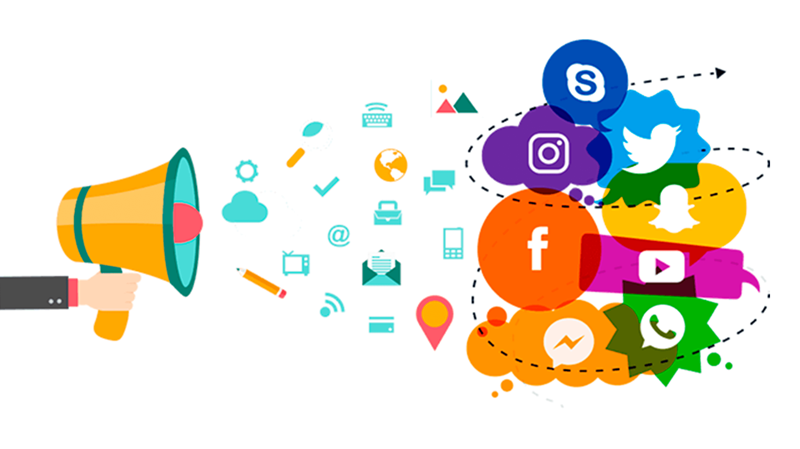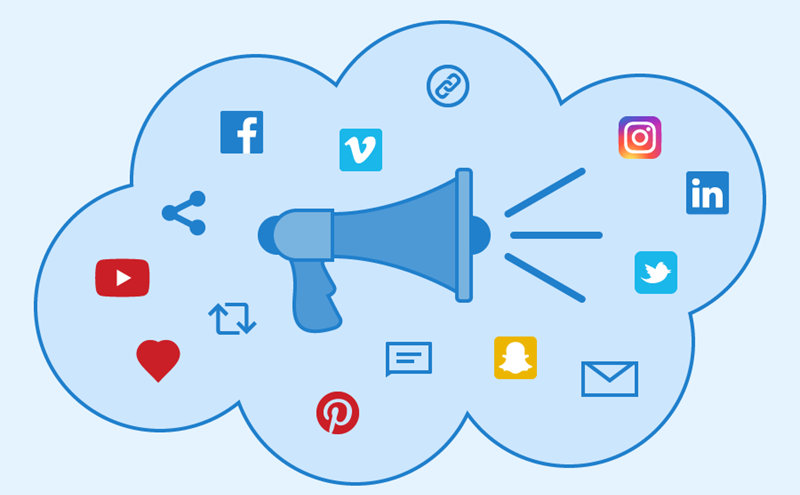Shared media refers to content that is created and distributed by users across various platforms and networks. This type of media allows for collaboration and interaction among individuals from different backgrounds and locations. The advantages of shared media are numerous, including increased engagement, creativity, and diversity of perspectives. By allowing users to contribute their own content, shared media fosters a sense of community and connection among participants. This form of media also enables individuals to express themselves in unique ways and share their passions and interests with a wider audience. Some common examples of shared media include social media platforms like Facebook, Instagram, and Twitter, as well as online forums and blogs where users can interact and share their thoughts and experiences with others.
One of the key benefits of shared media is its ability to amplify voices that may not typically be heard in mainstream media. By providing a platform for individuals to share their stories and opinions, shared media can help to highlight diverse perspectives and experiences that are often overlooked in traditional media outlets. This can lead to a more inclusive and representative media landscape, where a wider range of voices are given the opportunity to be heard.
Another advantage of shared media is its capacity to foster creativity and innovation. By allowing users to contribute their own content, shared media platforms can serve as a breeding ground for new ideas and perspectives. This can lead to the development of innovative solutions to pressing social issues, as well as the creation of new forms of art and entertainment that may not have been possible through traditional media channels.
Shared media also has the potential to promote dialogue and understanding among individuals with different viewpoints and backgrounds. By facilitating communication and collaboration among users from diverse communities, shared media can help to break down barriers and foster a greater sense of empathy and understanding among participants. This can lead to increased tolerance and acceptance of others, as well as the creation of new opportunities for collaboration and partnership.
Overall, shared media offers a powerful and dynamic platform for individuals to share their stories, ideas, and experiences with a wider audience. By enabling collaboration and interaction among users from different backgrounds and locations, shared media can help to amplify diverse voices, foster creativity and innovation, and promote dialogue and understanding among individuals with different viewpoints. As technology continues to evolve, shared media will likely play an increasingly important role in shaping the way we communicate and connect with one another in the digital age.

What Is Shared Media? An Overview
Shared media refers to the act of sharing digital content, such as videos, images, or articles, on various online platforms. This content is often distributed through social media channels, websites, or messaging apps, allowing users to easily share and engage with the material. Shared media has become increasingly popular in recent years as more people turn to social networking sites to connect with others and consume information.
This form of media allows for the rapid dissemination of information, ideas, and entertainment, reaching a wide audience in a short amount of time. Shared media can take many forms, from viral videos that are shared millions of times to blog posts that are reposted across multiple platforms. This type of media can be an effective way to build brand awareness, drive traffic to a website, or spark conversations around a particular topic.
However, it is important for users to be mindful of the content they are sharing and ensure that it is accurate, reliable, and appropriate for the platform on which it is being shared. Overall, shared media has revolutionized the way we consume and interact with content online, making it easier than ever to share and engage with information across the digital landscape.
Defining Shared Media: The Concept and Its Role
Shared media refers to the concept of individuals or groups coming together to create, curate, and distribute content across various platforms. This can include social media platforms, websites, blogs, and other digital channels. The idea behind shared media is to foster collaboration and engagement among users, allowing them to share their thoughts, ideas, and experiences with a wider audience.
Shared media plays a crucial role in today’s digital landscape, as it allows for the rapid dissemination of information and the creation of communities around common interests. It also provides a platform for individuals to express themselves creatively and connect with others who share similar passions. In essence, shared media is a powerful tool for communication, self-expression, and community building.
One of the key benefits of shared media is its ability to democratize the creation and distribution of content. In the past, media production was largely controlled by a select few, such as traditional media outlets and corporations. However, with the rise of shared media platforms, anyone with an internet connection can now create and share content with a global audience. This has helped to level the playing field and give a voice to individuals who may have previously been marginalized or ignored by mainstream media. Shared media also allows for greater diversity of perspectives and ideas, as users from different backgrounds and experiences can contribute to the conversation.
Another important aspect of shared media is its role in shaping public discourse and opinion. By allowing individuals to share their thoughts and opinions with a wider audience, shared media can help to influence public opinion on a wide range of issues. This can be both a positive and negative force, depending on the content being shared and the intentions behind it. Ultimately, shared media is a powerful force for communication and community building in today’s digital age.

How Shared Media Fits into Your Marketing Strategy
Shared media plays a crucial role in any comprehensive marketing strategy. By utilizing platforms and mediums where content can be easily shared and viewed by a wide audience, businesses can significantly increase their brand visibility and reach. Shared media allows for organic growth and engagement, as users are more likely to interact with content that has been recommended or shared by someone they trust.
This can lead to increased brand awareness, website traffic, and ultimately, sales. Additionally, shared media offers a cost-effective way to promote products and services, as businesses can leverage user-generated content and influencer partnerships to reach a larger audience without the need for expensive advertising campaigns. By integrating shared media into their marketing strategy, businesses can create a more dynamic and interactive experience for their customers, fostering a sense of community and loyalty around their brand.
Ultimately, shared media provides businesses with a powerful tool to connect with their target audience in a more authentic and engaging way, driving greater results and return on investment. In today’s digital age, shared media is a key component of any successful marketing strategy, helping businesses to stand out in a crowded marketplace and build lasting relationships with their customers.

Implementing Shared Media in Your Strategy
Implementing shared media in your strategy can be a powerful tool to amplify your message and reach a wider audience. Shared media involves leveraging social media platforms, online communities, and other digital channels to distribute your content and engage with your target audience. By creating shareable content that resonates with your audience, you can encourage them to share it with their own networks, exponentially increasing your reach and visibility.
This can help you build brand awareness, drive website traffic, and generate leads. Additionally, shared media can also help you tap into the power of user-generated content, which can be more authentic and trustworthy than traditional advertising. By encouraging your audience to create and share their own content related to your brand or products, you can foster a sense of community and loyalty among your followers.
Overall, implementing shared media in your strategy can be a cost-effective way to extend the reach of your marketing efforts and build a strong online presence. By consistently creating high-quality, shareable content and engaging with your audience on social media, you can leverage the power of shared media to achieve your marketing goals and drive business growth.
